List of North Dakota Milkweeds
North Dakota Milkweed Species to Include in your Butterfly Garden
There are eight species of native North Dakota milkweeds (Asclepias spp.) and one historic species that can be grown for Monarch Butterflies and other insects. Milkweeds are an important host species for Monarch, Queen, and Soldier Butterflies. The Monarch butterfly in particular uses the cardenolides found in the milky sap of milkweeds to give an unpleasant taste to predators. These plants are also an important nectar source to all insects visiting your pollinator garden.
1. Swamp Milkweed (Asclepias incarnata), a Milkweed for Moist Soils
Swamp Milkweed (Asclepias incarnata): Swamp milkweed has two subspecies, ssp. incarnata and ssp. pulchra. The former is found in the central and eastern parts of the state (hardy in zones 3-9), while the latter is not found in North Dakota (Kartesz 2015). Like the name suggests, in the wild, swamp milkweed is found in wet places such as the shores of streams, lakes, ponds, and other wetlands. Growing from 3 to 5 feet tall, it is one of the taller milkweed and has flowers that are generally a pink to red color, but there is also a white cultivar (pictured below). These flowers bloom from July to September.
In your North Dakota butterfly garden, swamp milkweed requires full sun to part-shade, and prefers moist to medium moisture soil, but can exist in drier soil as a landscape plant. Seeds of swamp milkweed can be purchased in the McMullen House Bed & Breakfast Garden Shop.
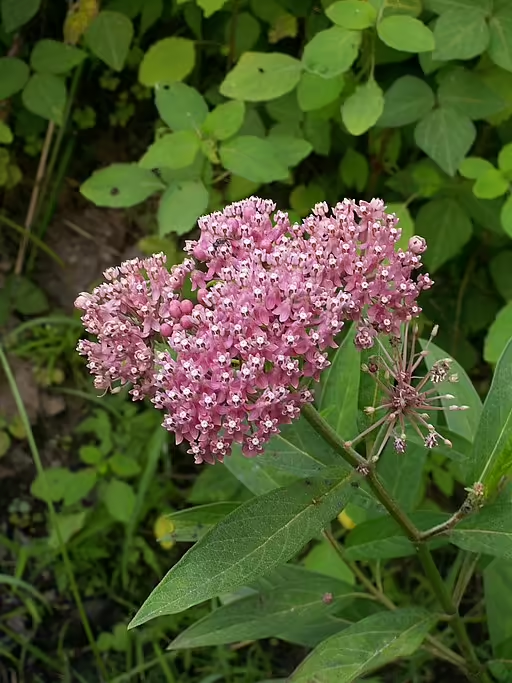

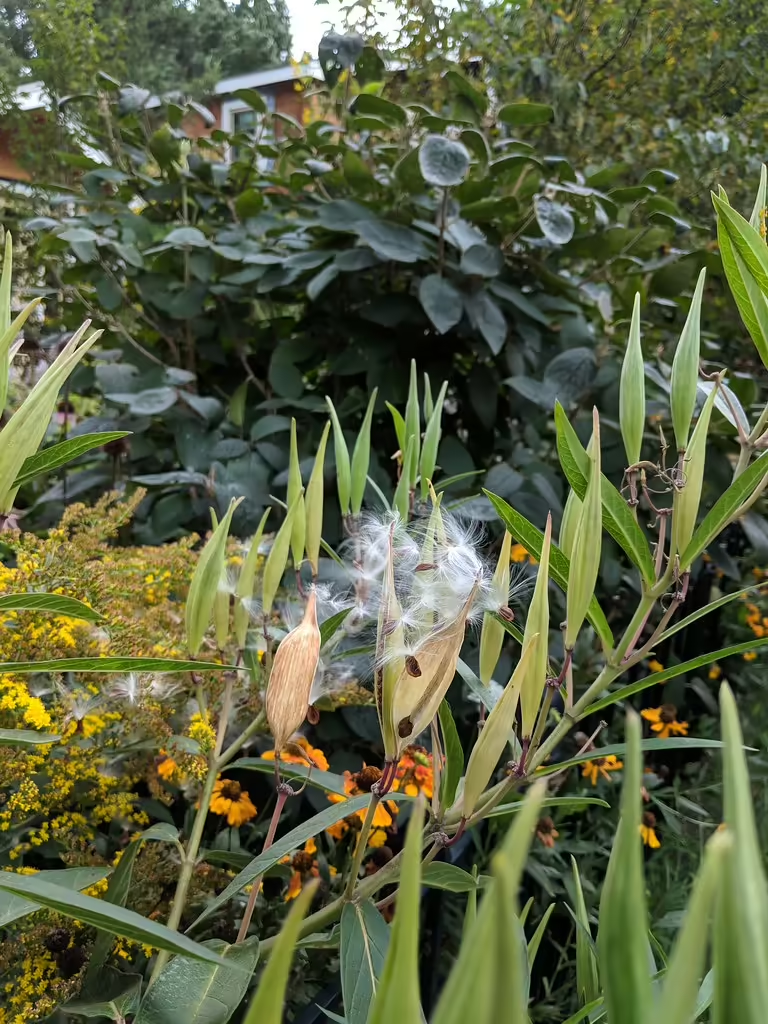
2. Side-Cluster Milkweed (Asclepias lanuginosa), a Rare North Dakota Milkweed
Side-cluster Milkweed (Asclepias lanuginosa): Side-cluster milkweed is native and rare in scattered locations in North Dakota (Kartesz 2015). In the wild, side-cluster milkweed grows in prairies and sandhills having full sun. The height of this milkweed is variable and ranges from 0.5 to 4 feet tall. The flowers, which bloom from May to July, range in color from green to cream.
In North Dakota butterfly garden, while side-cluster milkweed is hardy in zones 4-7, it is rare and not in the horticultural trade.
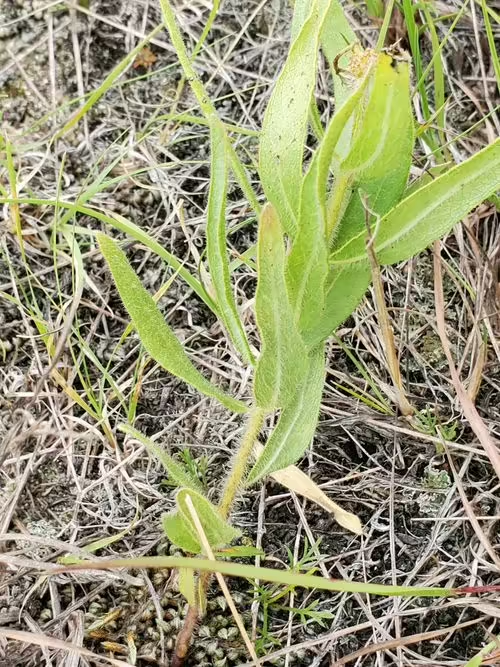

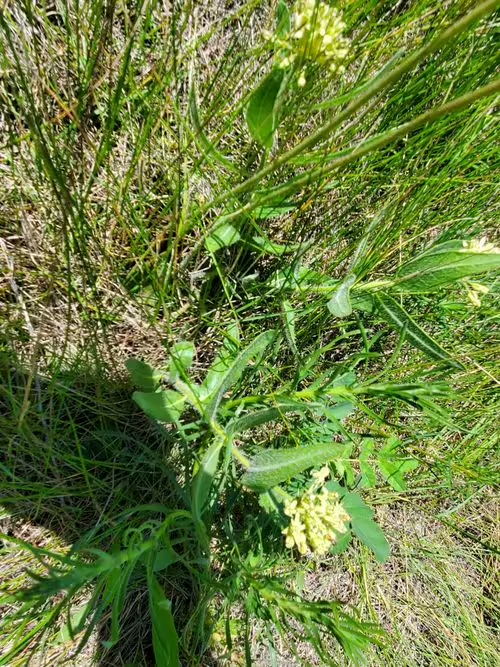
3. Oval-leaf Milkweed (Asclepias ovalifolia), a Milkweed for Well-drained High pH Soil
Oval-leaf Milkweed (Asclepias ovalifolia): Oval-leaf milkweed is native throughout North Dakota, except for the southwest (Kartesz 2015). In the wild, oval-leaf milkweed grows in open areas having full sun or partial shade such as prairies, grasslands, savannas, railroad edges, and alluvial terraces. It is one of the shorter milkweeds in North Dakota growing up to 2 feet tall. The white, pink, or green flowers bloom from May to August.
In your North Dakota butterfly garden, oval-leaf milkweed is hardy in zones 5-9, requires full sun to part-shade, and well-drained high pH soil. Seeds of oval-leaf milkweed can be purchased in the McMullen House Bed & Breakfast Garden Shop.
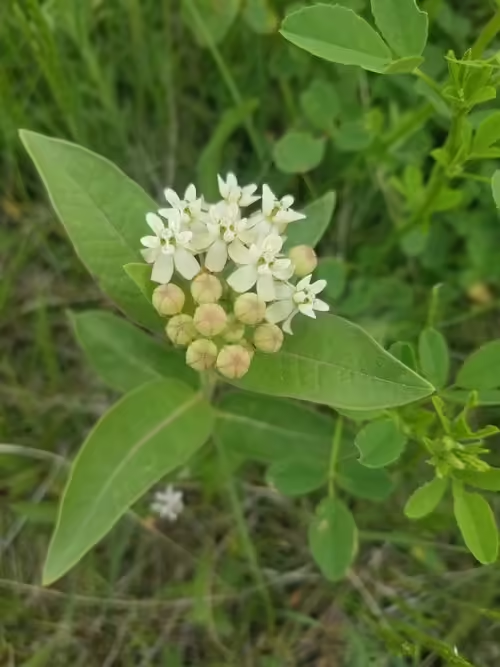
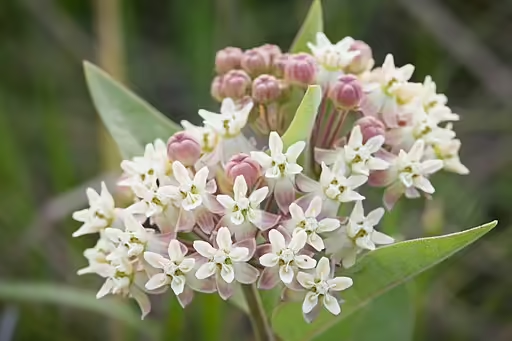

4. Low Milkweed (Asclepias pumila), a Milkweed for Dry Soils
Low Milkweed (Asclepias pumila): Low milkweed is located in the central and western parts of the state and one county in eastern North Dakota (Kartesz 2015). In the wild, low milkweed grows in dry prairies and plains that are at a moderate elevation. It is likely the shortest milkweed in North Dakota, growing only from 0.2 to 1.5 feet tall. The white to greenish-yellow to greenish-white flowers bloom from July to September.
In your North Dakota butterfly garden, low milkweed is hardy in zones 5-9, requires full sun, and dry sandy or gravelly soils.

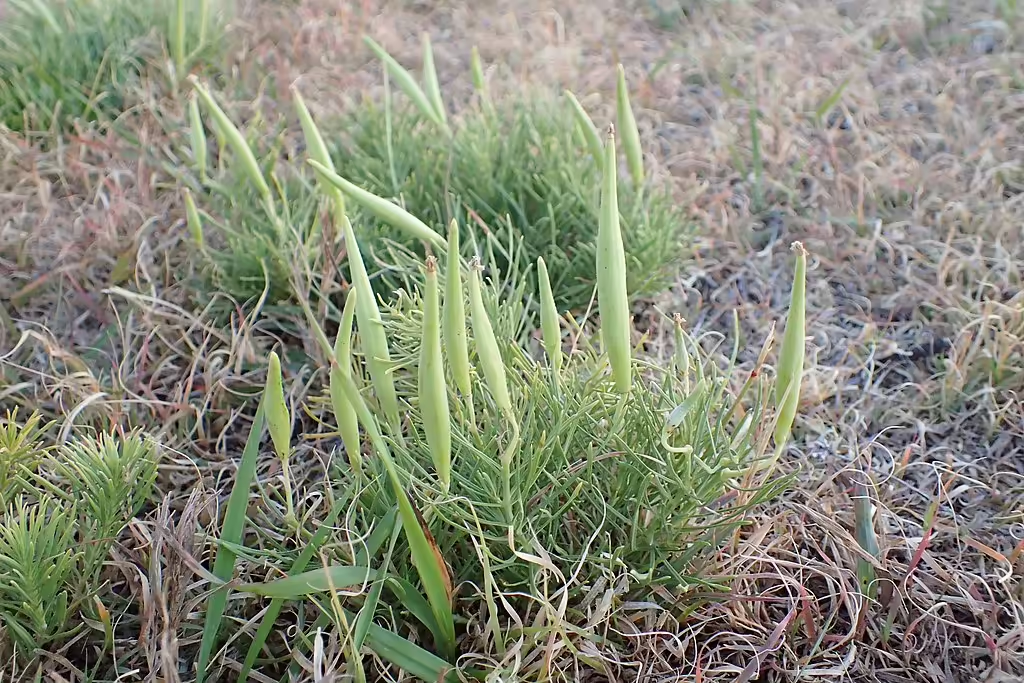
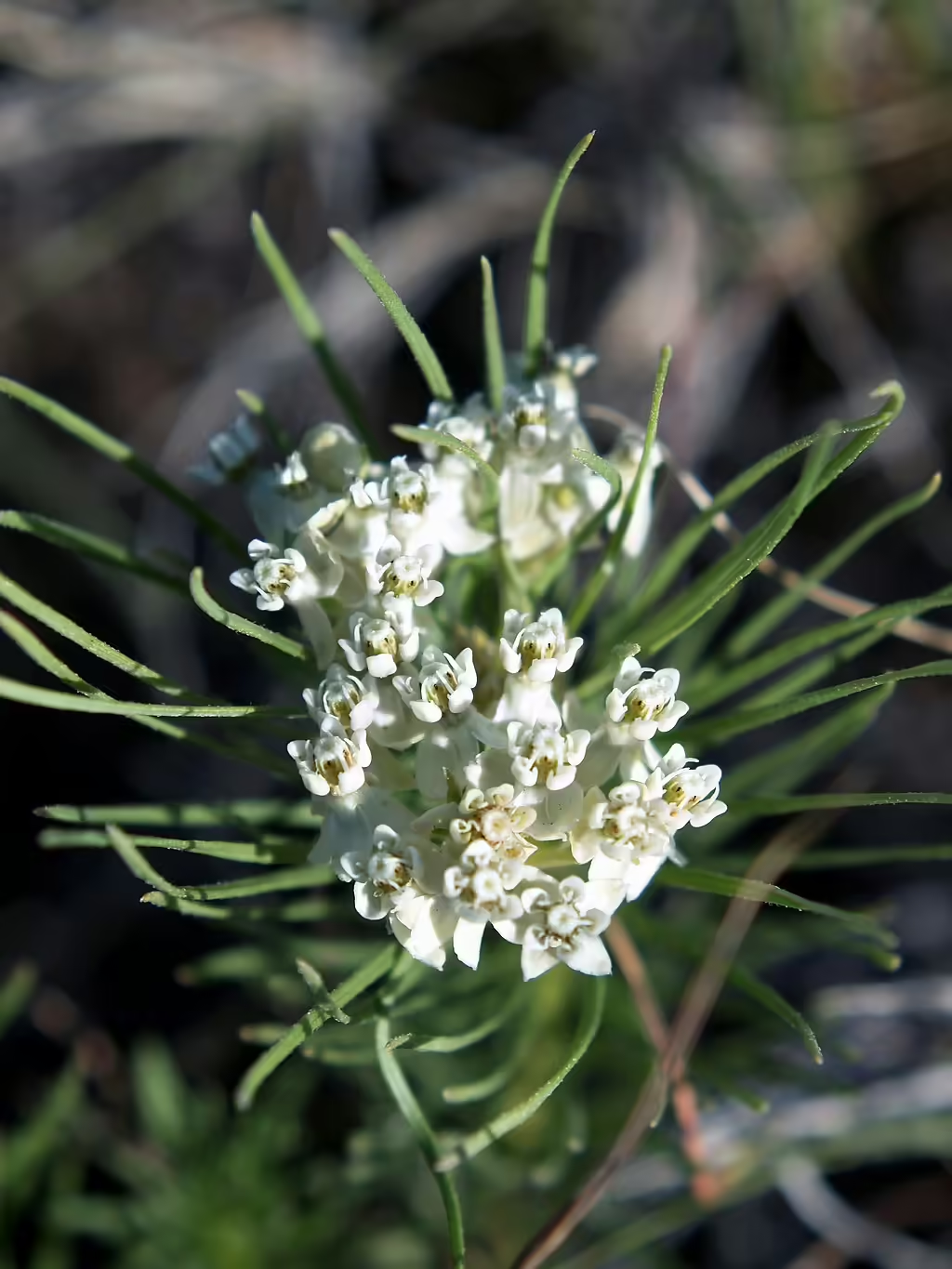
5. Showy Milkweed (Asclepias speciosa), a Milkweed for Medium to Dry Soils
Showy Milkweed (Asclepias speciosa): Showy milkweed is native throughout North Dakota (Kartesz 2015). In the wild, showy milkweed grows in open areas such as roadsides, fields, and woodlands that are mesic to dry. Growing from 1 to 3 feet tall, this milkweed has flowers that are purple to pink in color and bloom from April to June.
In your North Dakota butterfly garden, showy milkweed, is hardy in zones 3-9 and requires places of full sun having medium to dry well-drained soil. Seeds of showy milkweed can be purchased in the McMullen House Bed & Breakfast Garden Shop.



6. Common Milkweed (Asclepias syriaca), a Milkweed for all Conditions
Common Milkweed (Asclepias syriaca): Common milkweed is native to central and eastern North Dakota (Kartesz 2015). In the wild, this milkweed is found in open areas such as fields, pastures, and roadsides, where it can receive full sun. One of the taller milkweeds, it can grow up to 6 feet tall and has flowers ranging from pink, greenish-purple, greenish-white, to white and bloom from June to August.
In your North Dakota butterfly garden, common milkweed is hardy in zones 3-9 and grows in almost any exposure and soil condition, though it prefers full sun. Seeds of common milkweed can be purchased in the McMullen House Bed & Breakfast Garden Shop.
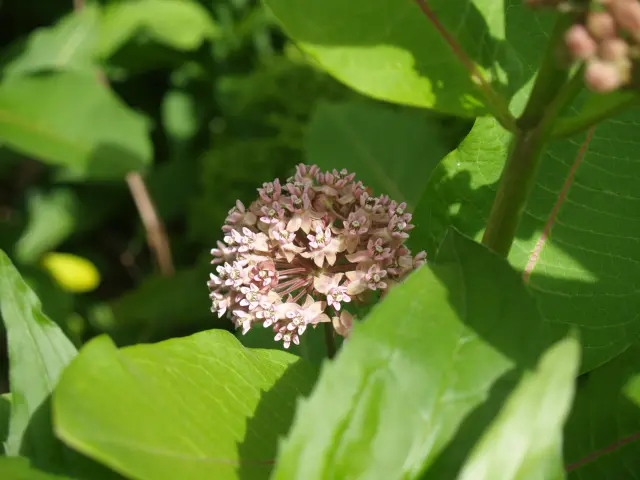

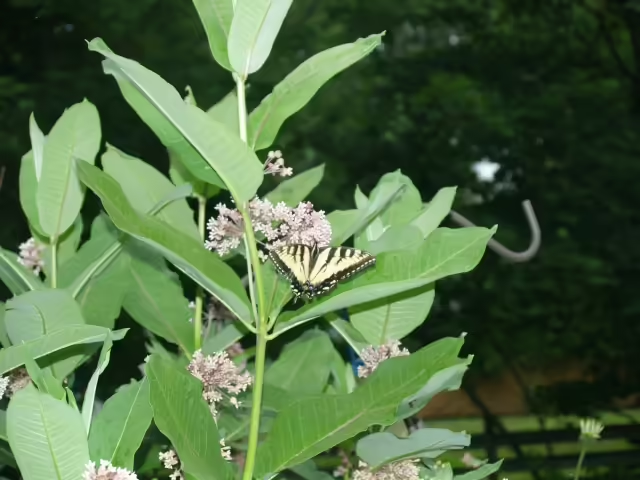
7. Whorled Milkweed (Asclepias verticillata), a Milkweed for Medium to Dry Soils
Whorled Milkweed (Asclepias verticillata): Whorled milkweed is native throughout the state (Kartesz 2015). In the wild, whorled milkweed grows in open areas such as meadows and fields, where it can take advantage of full sun. Growing up to 3 feet tall, this milkweed has green to white flowers that bloom from May to September.
In a garden setting, whorled milkweed is hardy in zones 3-9, requires full sun to part-shade and medium to dry soil. Seeds of whorled milkweed can be purchased at the McMullen House Bed & Breakfast Garden Shop.

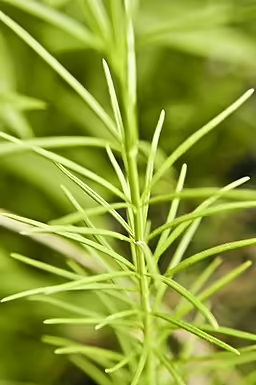

8. Green Comet Milkweed (Asclepias viridiflora), a Milkweed for Medium to Dry Soils
Green Comet Milkweed (Asclepias viridiflora): Green comet milkweed is native essentially throughout North Dakota except it is scattered in the northeastern parts (Kartesz 2015). In the wild, green comet milkweed grows in open areas such as meadows and field where there is full sun. Growing up to 3 feet tall, it has flowers that start out as a green color but age to become yellow and purple tinged. The flowers bloom from June to August.
In a garden setting, green comet milkweed is hardy in zones 3-9, requires full sun to part-shade, and medium to dry soils. Seeds of green comet milkweed can be purchased at the McMullen House Bed & Breakfast Garden Shop.
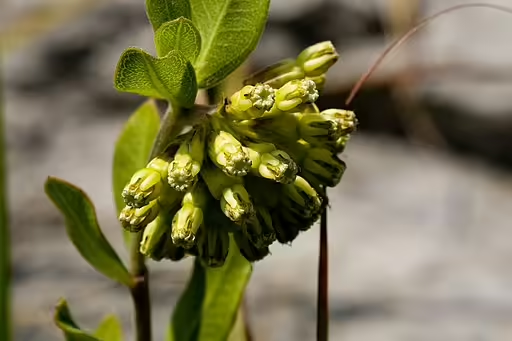
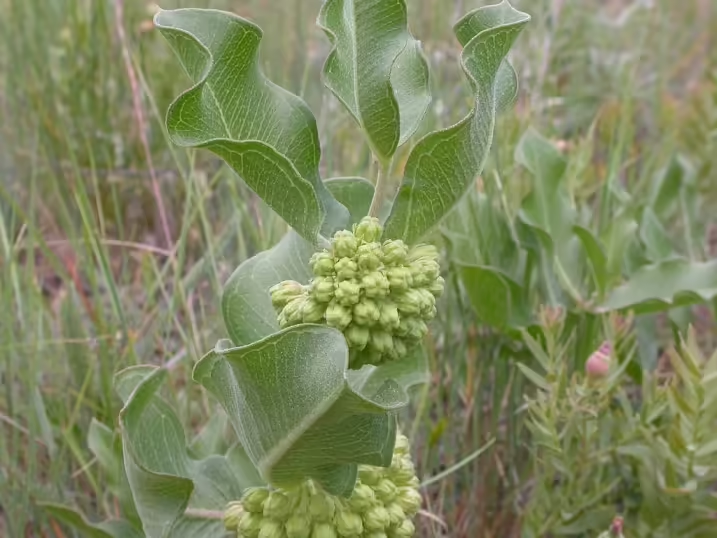

Historic Species – Sullivant’s Milkweed (Asclepias sullivantii), a Milkweed for Medium to Dry Soils
Sullivant’s Milkweed (Asclepias sullivantii): Sullivant’s milkweed is historic, meaning it used to be in North Dakota (Kartesz 2015). When present in the state it was located in two counties in the southeast. Sullivant’s milkweed grows in open areas with full sun such as prairies, meadows, roadsides, and railroads and was originally associated with tall grass prairies (Minnesota DNR). In June and July it has pink to purplish flowers.
In your North Dakota butterfly garden, it is hardy in zones 3-7, requiring full sun and medium to dry sandy soil. Seeds of Sullivant’s milkweed can be purchased in the McMullen House Bed & Breakfast Garden Shop.



When selecting your North Dakota milkweed, be sure to make sure that it grows in your zone and habitat.
References for North Dakota Milkweeds
- Kartesz, J.T. The Biota of North America Program (BONAP). 2015. Taxonomic Data Center. Link to website. Chapel Hill, N.C. [maps generated from Kartesz, J.T. 2015. Floristic Synthesis of North America, Version 1.0. Biota of North America Program (BONAP). (in press)]